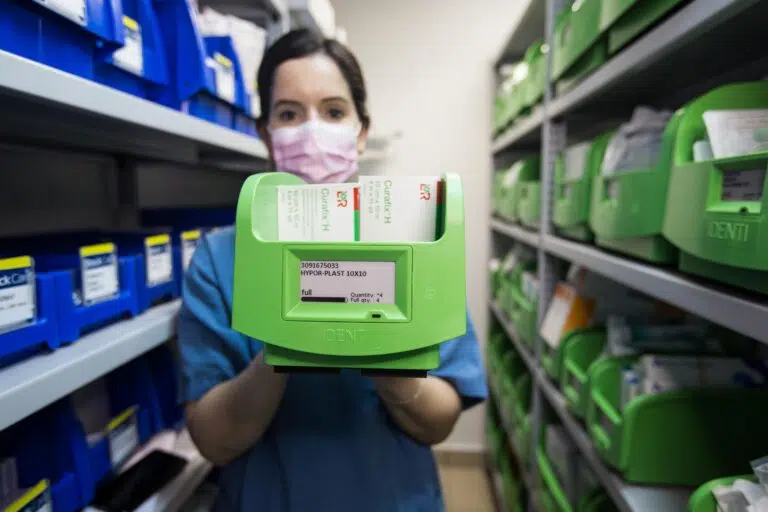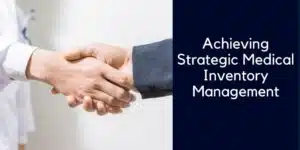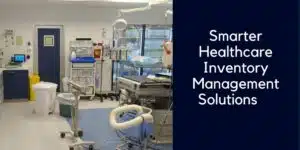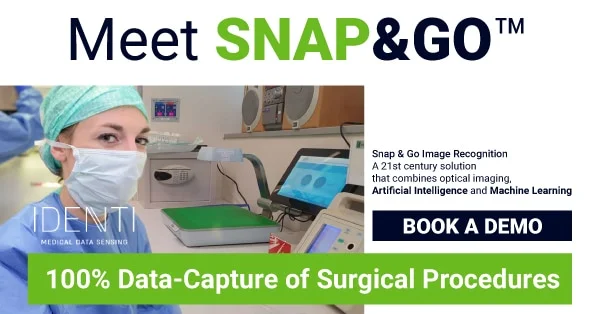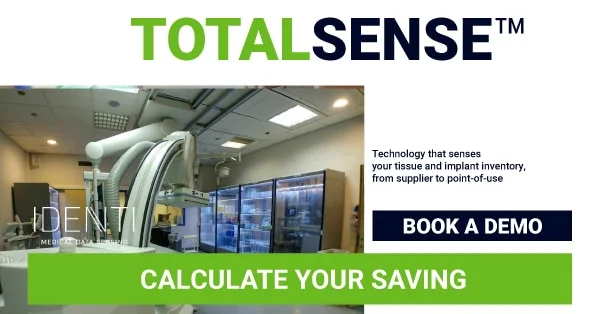What’s inside:
Today we look at an inspiring case study from The Heart, Vascular and Leg Center in CA, who went on a mission to optimize patient care and performance by automating their medical inventory management.
This blog looks at:
- The challenges they faced managing inventory prior to automation.
- The automated, digital solutions put in place to tackle these problems.
- The benefits achieved by adding inventory visibility and control via end-to-end implant tracking and automated point of use documentation.
- The impact of automated inventory management on performance.
This article follows the transformation of medical inventory management at the Heart, Vascular and Leg Center (HVLC) in California. We look at the power innovative technology had in supporting efficiency and performance targets.
In order to survive the challenges of the modern healthcare sector, hospitals and ambulatory surgery centers need to continually evolve and ensure they remain competitive, while at the same time ensuring they meet stringent regulatory standards. Within their continuous improvement agendas, two high priorities are optimizing operating room (OR) performance and achieving more efficient management of medical inventory.
Gaining full visibility and control of inventory is crucial for efficient healthcare management, as the data collected impacts on patient care, operational efficiency, cost containment and more.
The Challenge
Healthcare organizations, especially those dealing with specialized procedures, manage large amounts of high-value medical implants. Because this medical inventory represents such a major cost, organizations need to tightly manage and control their stock.
At HVLC, in common with with many other medical centers, they were using outdated processes and inadequate tools which made the management of medical inventory a time consuming and inefficient endeavor. HVLC embraces innovation and technology in their clinical practice and recognized that they needed to identify the best healthcare technology to modernize and optimize their medical inventory management.
The specific challenges identified at the Heart, Vascular and Leg Center included:
- Revenue and performance issues included:
- Utilization was a manual, keying-in process that took place after surgery.
- Surgical charge capture compliance was less than 60%.
- Nurses spent 2-3 hours per day on supply chain admin.
- High levels of wastage.
HVLC felt that improving data capture via the use of automated systems would have a positive impact on the revenue cycle.
- Inventory issues includes:
- Restocks were based on partial vision of surgical usage, resulting in regular surpluses, shortages and stock outs.
- Overstocked cabinets made it hard for staff to find the products they needed.
- There was high wastage, due to products expiring on the shelves and lost items.
- Labor-intensive, manual processes were time-consuming for logistics staff.
HVLC wanted to gain a better overview of their inventory and usage and sought automated tools that would give them real-time vision and full item level tracking. They wanted to base restocks on actual data to add precision into their procurement.
- Usage documentation issues included:
- Utilization took place after the procedure, and it could take up to 30 minutes to input problematic items.
- Up to 30 individual documentation issues occurred a week eg. missing data.
- No digital documentation of batch number to the patient record, as required by FDA UDI regulations.
- Many lower-value, billable items were left undocumented.
HVLC wanted to free up staff who struggled with a complicated system. They wanted nurses to be able to spend more time focusing on patients and not supply chain admin.
Overall, they felt that the inefficient management of high value inventory was having an impact on staff workload, costings, operational efficiency and revenue. It was time to take action!
Automated inventory management solution
HVLC understood they needed a technology upgrade and sought out a partner who could work with them to introduce the right technology for the different problems they faced.
IDENTI was asked to support their journey to automation by identifying key digital automation tools and technology that could address the center’s inventory management and OR performance challenges.
IDENTI and HVLC reviewed inventory storage locations, supply chain processes and made recommendations for a new way forward. Three types of software were agreed:
- Snap & Go, an award-wining point of use implant documentation system powered by image-recognition technology.
- TotalSense, an advanced UHF-RFID (Radio-Frequency Identification) smart cabinet for real-time, item-level tracking.
- AI management software, supporting both solutions and facilitating remote visibility, even for the medical center’s procurement team, located in India. The system enables in-depth analyses and generates operational insights.

The impact of automating medical inventory management
Implant Tracking: At the core of IDENTI’s solution lies real-time tracking – providing full inventory visibility, a game-changer in medical inventory control. The implementation of advanced smart cabinet technology enables the Heart Vascular Leg Center to monitor the movement of medical supplies with unprecedented accuracy. This supports timely procurement, ensuring critical supplies are always available when needed, and eliminating the risk of shortages and delays.
Product usage documentation: Surgical usage data is vital to achieve enhanced patient protection, informed inventory management and optimized revenue. The new computer vision sensing tool in HVLC’s procedure room resulted in:
- Accurate consumption data to drive procurement.
- Full charge capture to optimize medical billing.
- Full digital implant tracking, ensuring UDI compliance.
- Reduced nurse workload and increased satisfaction.
This vital data is seamlessly shared with hospital systems to support cross-organizational efficiency.
Data analytics:
Data analytics and predictions transport HLVC’s inventory management up to another level.
By analyzing historical usage patterns and current demand, the IDENTIplatform is able to forecast future requirements with precision. This vital management information enables proactive procurement by the HLVC team.
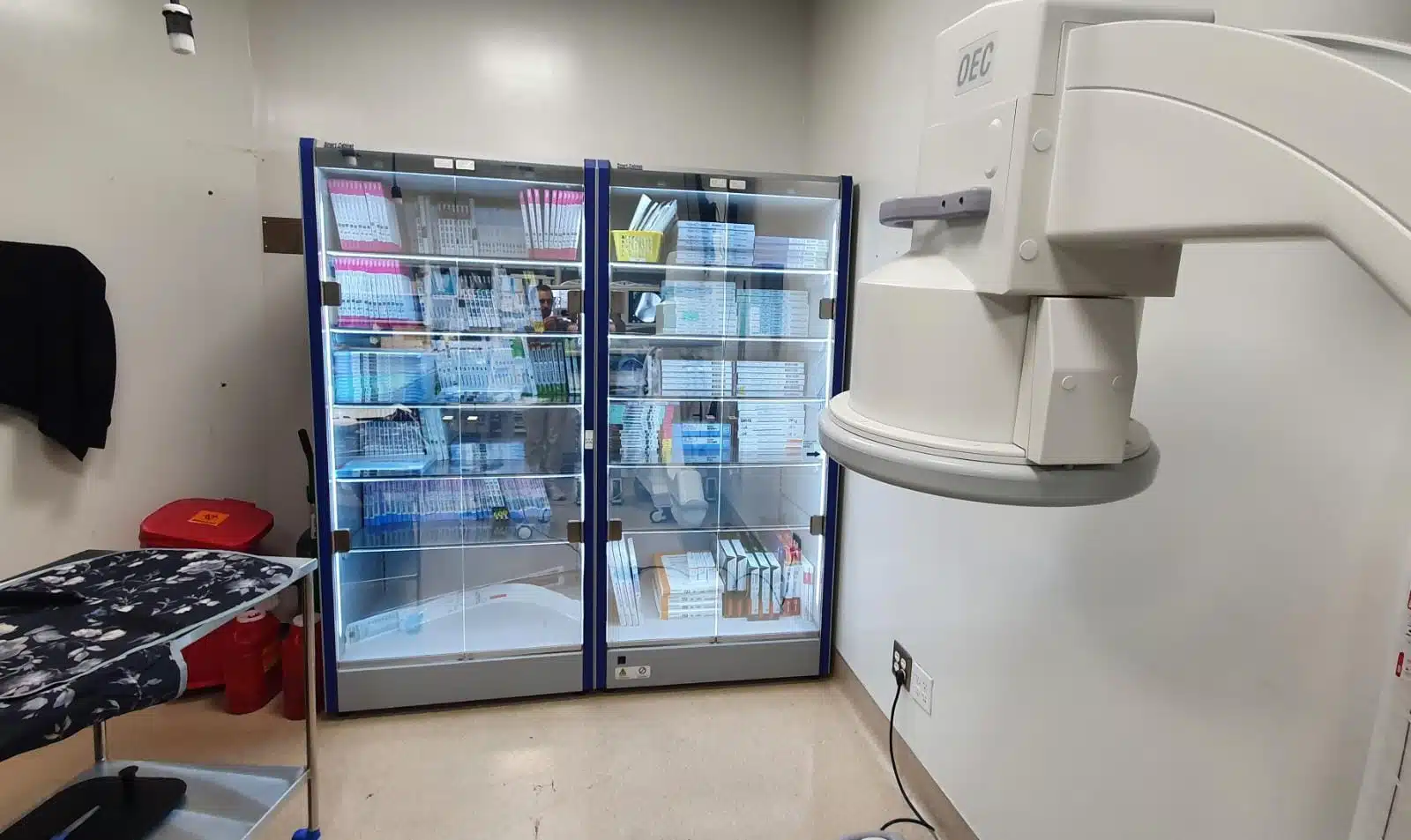
Benefits of automated inventory management at HCLV
The goals of HVLC were to introduce a fully automated inventory management system to achieve item level tracking, including consumption at the point of care. They wanted to reduce the time spent on supply chain administration and lower costs. Let’s see how they did on the initial metrics we received:
- 90-100% item and charge capture of reportable items up from the previous level of 60%.
- 30-40% reduction in the value of inventory – due to more accurate procurement and a streamlined inventory.
- A 70% reduction in the time taken to record surgical usage – documentation previously took up to 30 minutes per item, and this has now drastically improved to around 3 seconds per item.
- Value of expiring, surplus and unused stock items was reduced by 97.3% due to full inventory vision and greater control.
The Heart, Vascular and Leg Center in CA has completely transformed its management of medical inventory by incorporating digital solutions that achieve full item tracking and provide vital data insights to support effective management.
Read the full case study on the Heart, Vascular and Leg Center here.
The successful implementation of digital technology at HVLC illustrates that embracing healthcare automation is a strategic imperative that can support healthcare organizations as they strive to be competitive and deliver ensure high quality patient care.
Contact us to discuss your current inventory management challenges and we can begin a conversation which could lead to great things.

